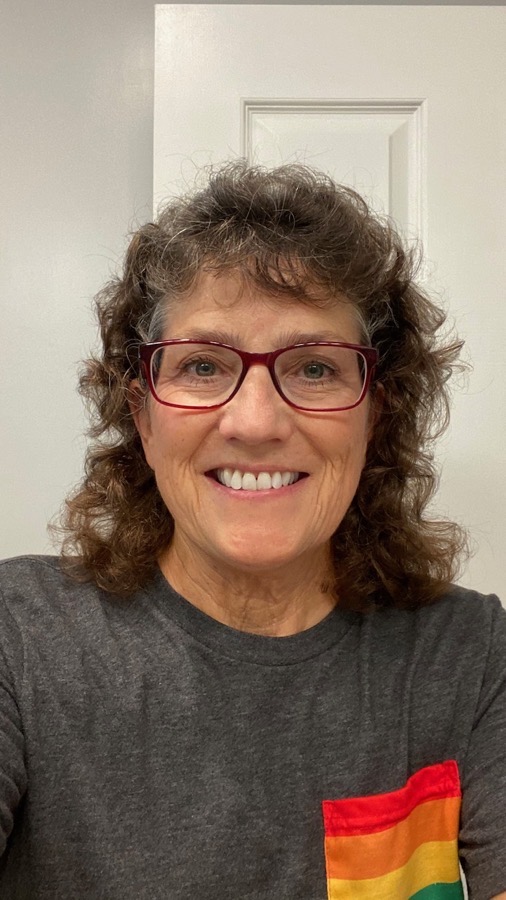
The last thing I would ever do is give any kind of medical advice on the podcast. I am going to talk about a way to buy eyeglasses without going to an optometrist, but I am not saying you shouldn’t go to the eye doctor for annual exams.
I have been going to a great optometrist’s office nearby for over 30 years and I love the staff there. I get my annual eye exam there and they have been very thorough and actually spotted a few problems over the years, causing me to follow up with an ophthalmologist.
But this optometrist’s office is in a mall in a very swanky part of town, so I’ve always wondered whether I was overpaying for my eyeglasses. It sure felt like it. They said my prescription was difficult because I had a wicked astigmatism and I also wanted progressive lenses to help my close vision. Evidently, based on the price they were charging me, these lenses required specialized artisans from a small Tibetan village to grind them accurately. Add in the scratch-resistant coating, some anti-glare, with tip and tax they cost more than most people’s house payments.
Many moons ago, armed with my prescription from my optometrist, I went to one of those one-hour glasses places in the mall, and it was a complete disaster. While they were super cool and let me watch my lenses being ground, and the price was much lower than my swanky optometrist, they simply could not grind the lenses so that I could actually see. Since that is the original problem to be solved, after two tries I made them give me my money back. And that’s why I’ve been paying through the nose for the last 30+ years to my swanky mall optometrist’s office.
Astigmatism and Cataracts
Last year when I met with the cataract surgeon, he said that by replacing my cataract-filled natural lens with a human-made lens, he could fix my astigmatism at the same time. He explained that the astigmatic effect is caused by the lens, or the cornea, or both in combination. As luck would have it, my astigmatism was caused by both, so putting in a “normal” lens would only fix the part in my natural lens, so we went for the super-duper enhanced lens that would compensate for the astigmatic effect in my cornea. The price of upgrading to the astigmatism-fixing lens was another couple of house payments.
I swear there’s a reason I’m telling you all about my cataract surgery, so bear with me. When I had the surgery, I chose to have human-made lenses that set my focal distance to 50 cm (19 inches) which means I can see a computer screen perfectly, and I can read pretty close up. That means I have to wear glasses for distance vision, but obviously computer distance is the most important, am I right?
After getting the human-made lenses both eyes, I went back to my trusty optometrist, figuring I would finally be able to get nice, cheap glasses. Well, guess what? With progressive lenses (bifocals without a line), no astigmatism correction, anti-scratch, and an anti-glare coating, and plastic lenses so they’d be light, and the least expensive frames I could buy … the glasses cost $584. I couldn’t believe it.
Now, why have I gone down memory lane with you about my vision and the cost of my glasses? Because I have found a solution to this problem.
Wine Wednesday

During the current times, six of us get together once a week on a Zoom call in what we call Wine Wednesday. You may have noticed that even with wine, every conversation you get into eventually devolves into talking about the pandemic. I didn’t want that to happen, so I insisted that we have an agenda every week. This has been hugely successful, and I highly recommend having an agenda for your fun times on video with friends.
On our agenda, we’ve had people talking about good books they’ve read, the best way to view celestial objects, LTE vs 5G speeds, how to decide whether to get earthquake insurance and more. One week our friend Lori asked to have eyeglasses added to the agenda.
When it came time for our discussion she showed off a pair of eyeglasses that she bought entirely through an online service called Zenni Optical. zennioptical.com. They suited her perfectly and then she told us the price. I’m going to tease you with that and get to it at the end of my story.
My Experience with Zenni
Just like everyone else, I’m trying very hard to eliminate any reason to go inside of any stores unless I absolutely have to. I depend on my existing glasses of course, and I was worried about what I would do if I broke them. That’s always been a fear of mine, but buying a backup pair just didn’t make the budget cut. When Lori told us about Zenni I thought maybe they could make me a spare set so I wouldn’t have to worry.
Before you can get glasses from Zenni, you have to have gone to a real eye doctor, gotten your eyes checked out from that health perspective I’m not advising you about, and gotten a prescription. You’ll need that prescription to supply the numbers to Zenni so they can grind your lenses.
What the numbers mean
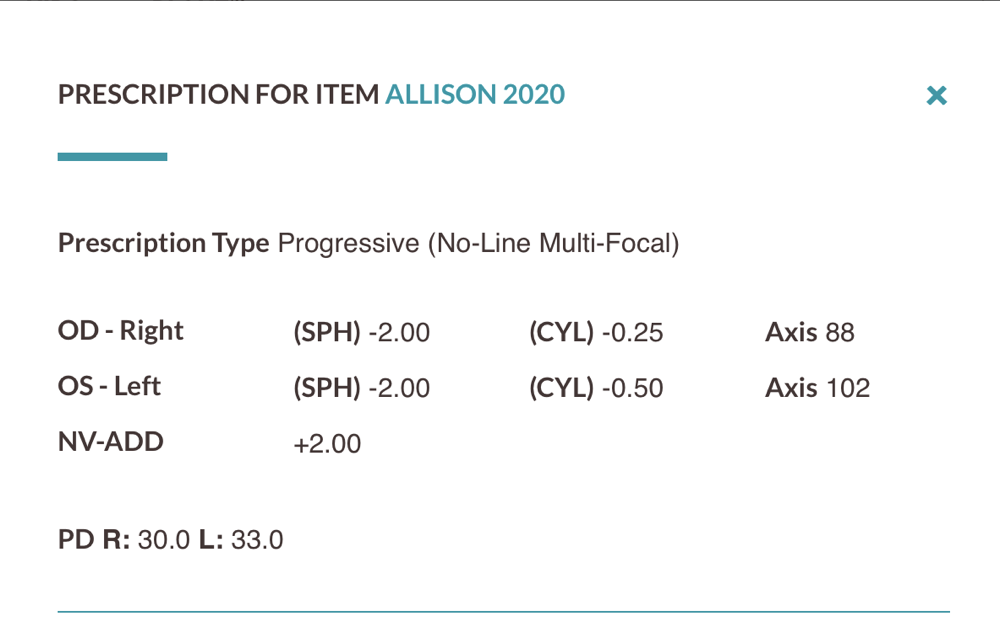
I think when most of us get our prescriptions, we look at the numbers for a brief moment and then file the prescription away pretending we had any kind of clue what it meant. If we ever go to a new place for glasses, we’ll just wave it at them and they’ll know what to do with it. But I figured if I’m going to be typing these into a website, I’d better understand what I’m doing.
For each eye, you get a couple of cryptic measurements. One of them is Sphere. We all know our eyes aren’t spheres, so I’m not sure why they chose that name. Sphere turns out to be the diopter. Well gee, Mr. Wizard, that’s a big help. According to the trusty dictionary, diopter is “a unit of refractive power that is equal to the reciprocal of the focal length (in meters) of a given lens.” We’ve got a few photographers in the crowd here so this might be coming into focus for us (see what I did there?)
I think I can make this make sense. On my post-cataract surgery prescription, both of my eyes say -2 for Sphere. The minus sign means I’m nearsighted, if it’s positive on yours, you’re farsighted. But the 2 is the diopter and it’s supposed to be the reciprocal of the focal length in meters. If we invert the 2, then it’s 1/2 = .5 m. And .5 m is 50cm, which is the distance to a computer, or exactly what the cataract surgeon said it should be.
Whew, that was some rough math.
But we’ve got some even more annoying terms and they’re really important to get straight when you’re ordering glasses online. You’ll see Cylinder and Axis which, according to allaboutvision.com/… describe the magnitude and rotation of your astigmatism. You’ll have two values for this measurement, one for each eye and you’ll have to type that into the Zenni website.
Prescriptions very helpfully do not say right and left eye. That would be way too easy. Doctors want to flaunt the fact that they were forced to learn Latin, so the two astigmatism measurements are written as OD and OS. For all of the left-handed people in the audience, I apologize for the following terms. OD means the right eye and is an abbreviation of the Latin oculus dexter, and OS means the left eye and stands for oculus sinister. Why does left always get a bad rap?
Now that you know that your left eye is sinister, you’ll know which eye is which when providing your prescription to Zenni or any other glasses manufacturer.
Distance Between Your Eyes
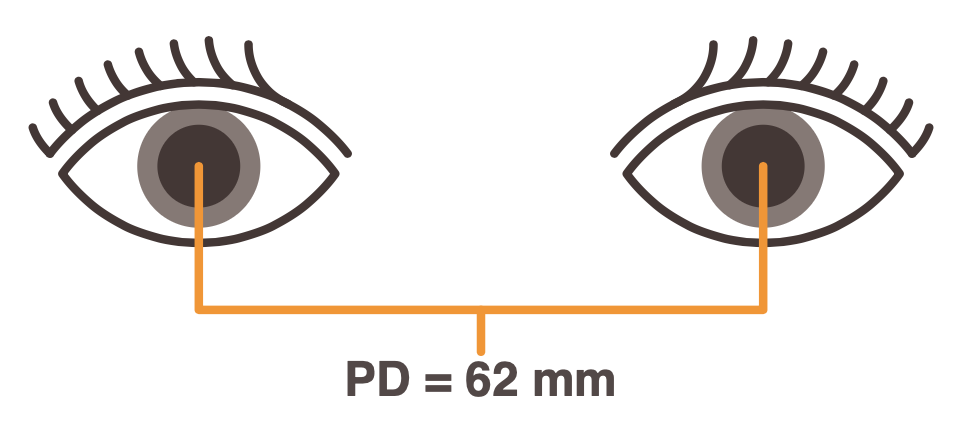
But there’s another really important measurement they make at the optometrist’s office, and it’s not on your prescription. You need to know how far apart your eyes are, and in some cases, how far each one is from your nose. This distance between your pupils is called pupillary distance. Glasses have a sweet spot where you want your eyeballs, so this is a critical measurement.
Zenni has a great instructional page on how to measure this distance. They first describe in text how to look in a mirror with a ruler on your forehead and close each eye as you work on measuring it. They’ve also got a nice graphic showing what they mean. They also tell you the average range of PD for adults and kids to give you an idea of the measurement you should be finding. And if the words, graphics, and values didn’t get you there, they’ve got a how-to video. If you have someone to help you, they have yet another set of instructions. They even have a ruler you can download and print!
Things get a bit tricky if you want progressives lenses. I suspect that with close vision, the location of your pupils in each lens is even more critical, so you need to tell them the distance from the center of your nose to your pupil for each eye, which they call Dual PD. I discovered when Steve measured my two eyes that I am really not symmetrical at all. In fact one of my eyes was so far away from my nose, it was outside of the range of values Zenni would accept! I am a mutant. I’m sure you’ve all noticed this abnormality and it’s very sweet that none of you have ever mentioned it.
So Many Frames
Now that we’ve got all of this work done understanding our prescriptions, it’s time to look at frames. Some of you may be asking yourself why I didn’t ever go to Warby Parker, an online eyeglasses service that was heavily advertised by podcasters. A while back I did check them out but the selection of frames was so limited I didn’t find anything I liked.
At Zenni, the problem is the reverse – they have so many frames! You can search by 8 different shapes, by 19 different colors, or by 8 different materials. You can even filter by size or whether the frame would work for that Dual PD thing we talked about for progressive lenses. There is an abundance of riches here.
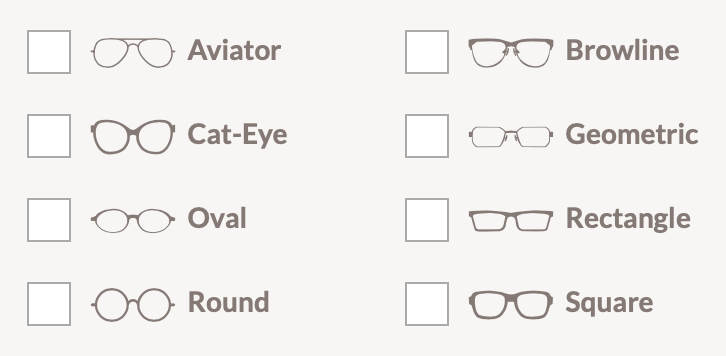

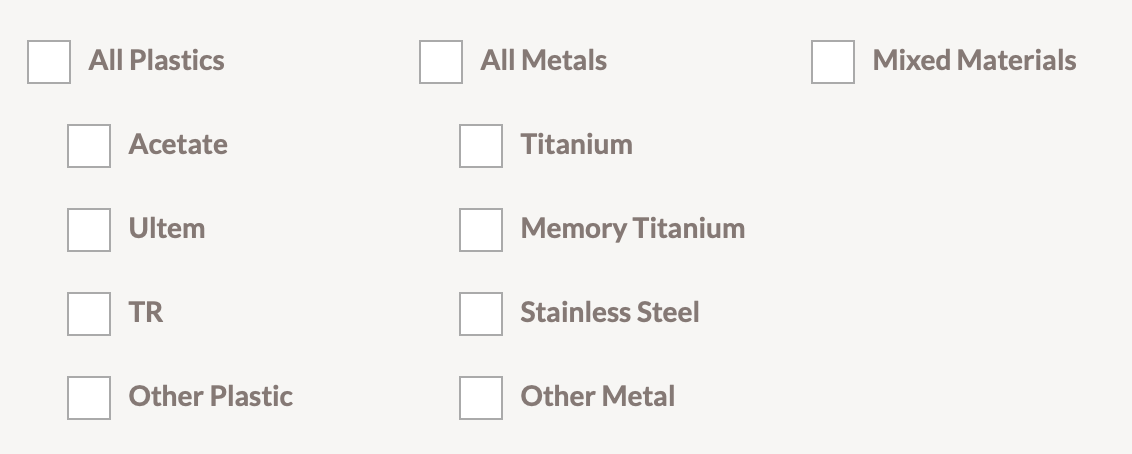
When you favorite a couple of frames you like, you can make a little video of yourself wearing the frames. It’s kind of like setting up Face ID on an iPhone. You slowly look left, then slowly right as they create a 3D video of your face. You can make lots of these little videos and test different frames with different lighting. I really wanted to know whether red frames would look crazy on me, or awesome. With some frames, it was hard to tell the color from black, but the red frames clearly looked awesome.
You also might want to make a few videos to make sure that your head was at the right angle to see how well the frames fit your face. I did one where the glasses looked like they would fall down my nose. If you were in a physical store, you might try on a pair of frames and if they slid down your nose you’d just put them back and try another. But with Zenni you can’t really do that. Luckily there are numerical values that define the size and shape of frames, and Zenni shows them to you.
For example, did you know that frames have a nose bridge width measurement? I did not know that. If you look at your existing glasses that fit you well, you’ll see a number, then a square, and then another number. My existing glasses say “52▢17”. The first number is the width of the lenses and the second is the bridge width. The glasses that were sliding down my nose in the little “try it on” video were way wider than the 18mm that fit me, so the video really helped me not buy poorly fitting glasses.
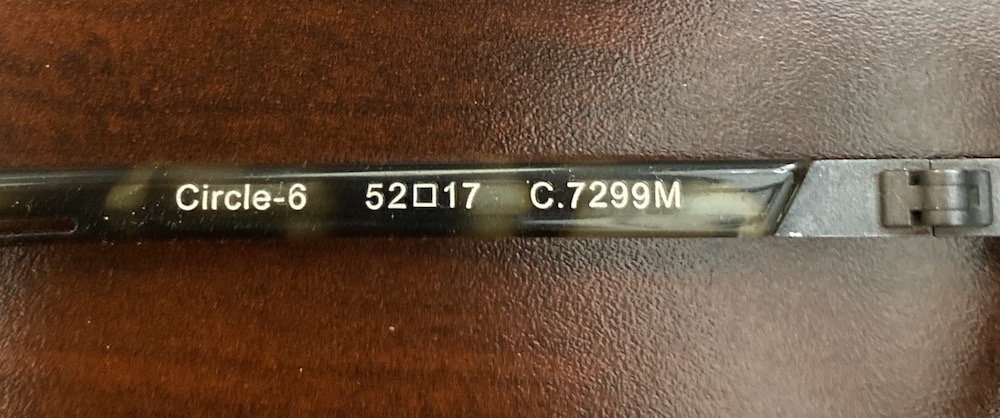
As I perused the plethora of frame options, I used the Zenni interface to filter my choice by lens and bridge widths, which really helped narrow down my options. Another helpful thing to measure for yourself is the total width of the frame. I suggest keeping an eye on that if you’ve got a head on the large or small side so you don’t look silly in your new glasses. The temple length is another thing to measure, which could tell you if they’ll be too long or short to bend around behind your ears.
But How Much Did They Cost?
It’s finally time for the big reveal. My price was:
- $7 for plastic frames
- $28 for anti-reflective coating
- $0 extra to have 100% UV protection
- $4 for a pair of matching clip-on sunglasses
- $2 to have my phone number engraved on the inside of the temple in case I lose them.
Out the door, shipped to my house, with tip and tax, I paid a grand total of $45.75. My last glasses from my swanky mall optometrist were $584. That’s almost 13X what I paid for my Zenni glasses!
I figured these glasses would feel cheap and cruddy and couldn’t possibly have the prescription set correctly, but when they arrived, they were perfect. I love these glasses. I actually stopped wearing my $600 pair and wear the inexpensive Zenni’s all the time. And remember with the clip-ons, these are sunglasses too for my $46.
One little note. Remember how I got the lens and bridge width measurement from my existing glasses? For some reason Zenni did not print that measurement on the glasses they made for me. I guess I’ll have to refer back to my receipt when I go to buy another pair.
Steve’s Experience with Zenni
Let’s get a slightly different perspective on the Zenni purchasing experience. You might be thinking I just got lucky, and what would you do if you bought glasses from Zenni and they weren’t perfect. It’s a valid question, and perhaps Steve’s experience will put your mind at ease.
Steve was intrigued by my experience and decided to buy Zenni glasses of his own. Steve doesn’t wear glasses most of the time but wears them for distance vision, such as when driving and watching TV. As one does, he likes to play on his laptop while he watches TV, but it’s hard to read the computer with distance glasses on. He only recently started enjoying the benefits of progressive lenses.
When I chose progressive lenses at my swanky mall optometrist, I had two different versions to choose from, regular and computer. But on the Zenni website https://help.zennioptical.com/hc/en-us/articles/360047614133-What-other-reading-options-do-you-offer-besides-bifocals-and-progressives-, you get three options on how far up the close vision part goes.
- Standard progressives – multi-focal lenses with three viewing areas: distance-, intermediate-, and near-vision. Unlike bifocals, there is no visible line between each viewing area. They have a seamless, invisible design where the power “progressively” changes throughout the lens.
-
Near-Range Progressives – offer greater comfort and visual clarity within 3 feet. They are designed for those who spend long periods at a desk or other confined workspace. With a wider field of up-close vision, this specialized lens is great for prolonged reading, using hand-held devices like mobile phones and tablets, detail work like sewing, as well as heavy computer use and reading.
-
Mid-Range Progressives – feature narrower near-range vision with greater mid-range vision for comfort and visual clarity within 10-14 feet. This lens is designed for those who need enhanced, up-close vision with the ability to see the entire room more clearly. This specialized lens is great for those who work in an office environment because it not only helps you see the computer clearly, it allows you to see around a conference room.
They say that near-range progressives have a bigger area at the bottom for close-up work, mid-range progressives have a smaller near-range area but a bigger area at 10-14 feet of focus, and the third option, standard progressives, has no explanation of what you can see.
When Steve bought his pair of Zenni glasses, he chose mid-range because the site suggested them as good for TV watching. Apparently the TV viewers they’re familiar with sit up straight in a chair and don’t recline like a normal person. When Steve got his glasses, he had to tilt his head down to look through the far vision part, and he found it annoying.
Steve contacted Zenni, and for NO charge, not even shipping costs, they let him return the glasses and reorder them as standard progressives instead! While he was at it, he ordered a different set of frames that were slightly narrower because the first pair looked a bit wide on him.
He got the replacement pair in a couple of weeks and they are perfect. Steve went for very fancy metal frames so his glasses were way more expensive than mine. Out the door, he paid $92.80. The last time he went to the swanky mall optometrist, he only had the lenses replaced in existing glasses, no frames, and those lenses alone were $578. So lenses alone were nearly six times as expensive as lenses and frames from Zenni Optical.
Bottom Line
I never thought buying glasses online would be a viable option because there was no way I could get a good fit, or be able to tell how they looked on my face, or would actually be able to see well with them, but Zenni Optical has won me over. I do worry who will fix my glasses if I bend or break them, but for 1/13th the cost, I can just buy new ones! I do have one warning about Zenni, they start sending you emails with pictures of glasses, and at the price they charge, I’m pretty sure I’m going to be buying more pairs for every occasion. Ooh look, they even have prescription safety glasses!


Last year I read a very informative series of articles, about the eyewear industry, by David Lazarus of the Los Angeles Times. His reporting was an eye opener (Of course the pun was intended).
Like you, I am avoiding any unnecessary trips. In July, I decided to give Zenni a try. $25 later, I am very happy with my decision.
I can’t believe you didn’t have “Podfeet” engraved on the arm!
#opportunitylost
I only buy my glasses from Zenni. Instead of buying one pair of glasses for $300, I buy a multitude of glasses, different lens colors for the sun and so on. My most expensive progressive lenses have cost about $60. For around $25 I can get bifocals. GREAT DEALS. I’ve been only using Zenni for at least 5 years, maybe 10.